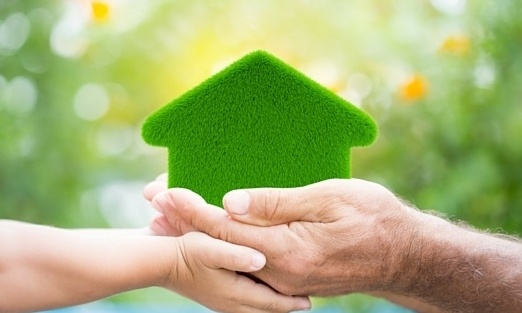
Whether you’re a renter or a homeowner, chances are you care about protecting the environment – and saving money.
Here are some tips from Bank Independent and the American Bankers Association to help you both go and save green!
Location, location, location efficiency. Carefully consider the location of your home. If you’re close to work, shopping and entertainment, you may not need a car. Without a car you would save money on gas, car insurance and maintenance, not to mention reduce pollution. If you’re thinking about moving further out, try to find something near public transportation and shopping.
Light up the house, not the electric bill. Replacing incandescent light bulbs with more energy efficient compact florescent light (CFL) bulbs will save you about $6 a year in electricity costs per bulb and more than $40 over its lifetime. According to ENERGY STAR, if every American home replaced just one light bulb, we would save enough energy to prevent 9 billion pounds of greenhouse gas emissions per year. Remember to recycle used CFL bulbs. Go to www.epa.gov/bulbrecycling for recycling locations.
Some like it hot, hot, hot…or cold, cold, cold. Closely monitor your thermostat. Adjusting it just a few degrees while you’re out can save energy and money. You can make it easier by installing a programmable thermostat. Use fans and close the blinds during the warm months and let the sun in for natural warmth in the winter. Also, change your filter every three months.
How low can you go? One way to save water is by using low-flow toilets. The most cost-effective way to do this is to simply take a 1 liter plastic bottle, fill it with water and place it inside the tank. This will reduce your water use per flush. Another way to save water is placing an aerator on all of your faucets.
Make it mean-green-clean. Cleaning supplies can be expensive and are made with toxic chemicals. You can save money and the environment by making your own cleaning supplies. All you need are some basic household ingredients like vinegar, lemon juice, baking soda and borax to clean everything from windows to tile. Look online for recipes and suggestions.
Reduce, Reuse, Recycle! Sticking to this mantra can help you save money around the house. Use a rag instead of paper towels. Buy products in bulk, concentrate or refillable containers to reduce packaging waste. Look for products made from recycled content. And don’t forget to recycle!
Win-dos for your windows. There are a number of ways you can make your windows more energy efficient without replacing them. For better insulation from the weather you can caulk exterior joints, put shrink wrap on them or hang blackout curtains.
Fan the green flames. To keep your refrigerator running efficiently, keep the fan clean. The motor won’t have to work as hard if the fan is clear of debris.
Decorate green. Houseplants are like living air-filters. English Ivy, rubber trees, peace lilies and red-edged dracaena can help clean the air and look pretty too.
Vampire energy is sucking you dry. On or off, anything plugged into the wall sucks energy. Vampire power costs U.S. consumers more than $3 billion a year, according to the U.S. Energy Information Administration. Unplug your electronics and appliances when they’re not in use.
For more green home solutions, visit: epa.gov/greenhomes
